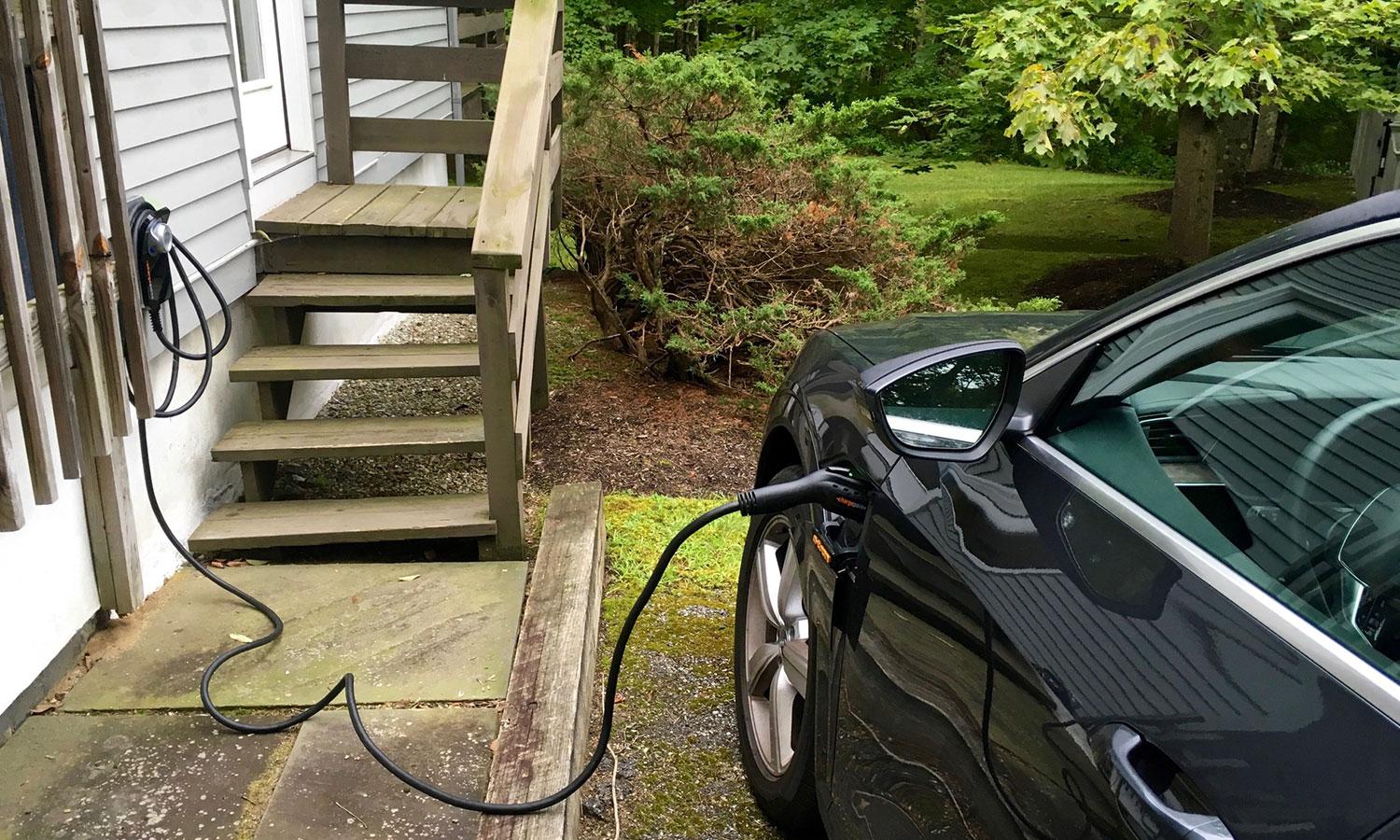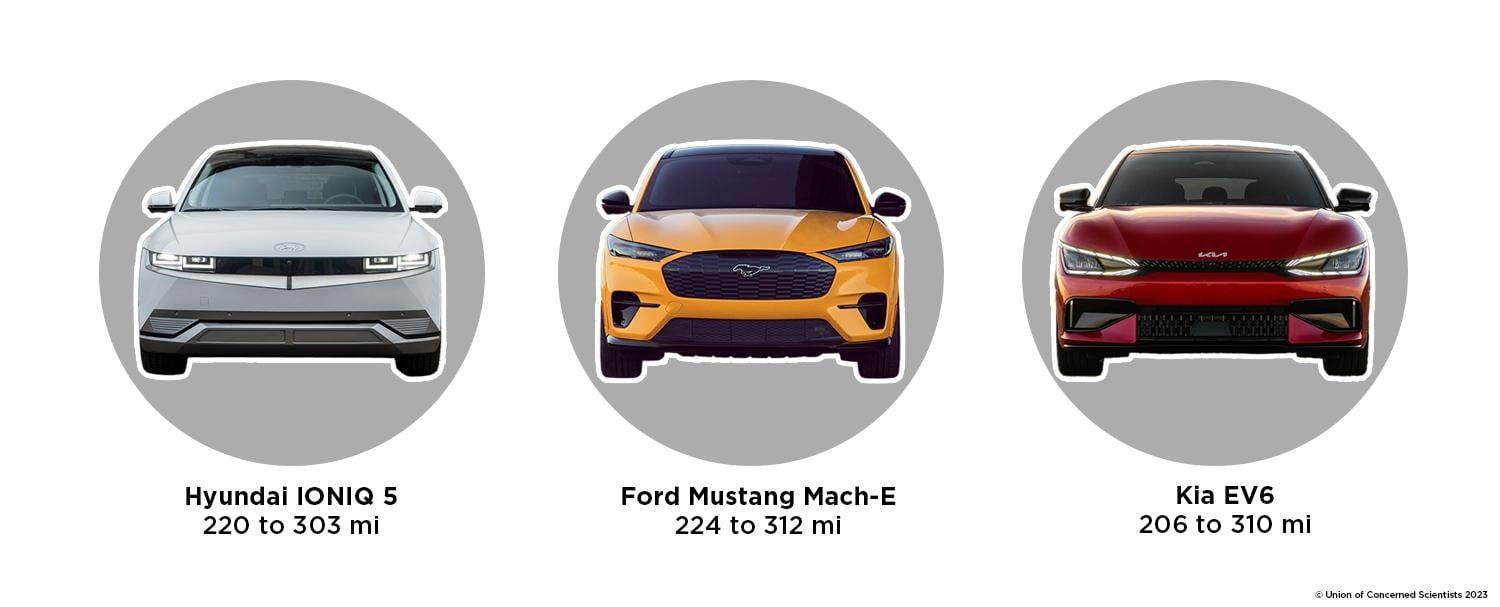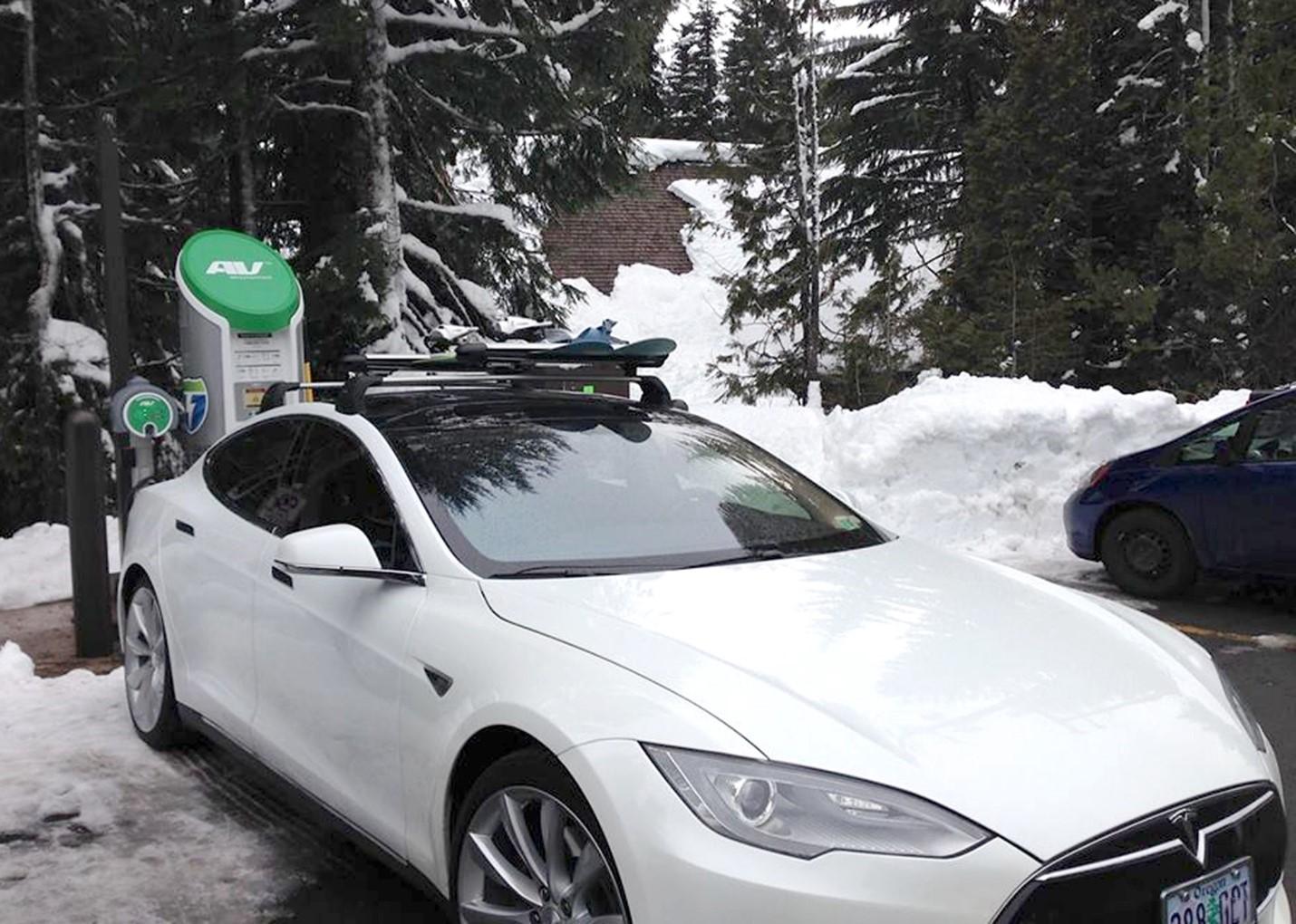Table of Contents
Whether it’s your first car or your next car, choosing the right vehicle is an exciting journey.
A little bit of pre-planning and thinking about your needs and how you use your vehicle will go a long way in directing you towards the best choice.
This electric vehicle buying guide will walk you through the foundational questions you should be asking as you shop for a new, efficient car.
Do you need a car?
Car ownership is not without headaches— traffic, parking, insurance, and maintenance, to name some. It’s no surprise that many of us are asking, what are my other alternatives? Maybe your weekly commuting miles have shrunk as many workplaces now offer work-from-home or hybrid schedules. Maybe you’re interested in getting to more places by walking or public transit, or maybe you’re curious about e-bikes. Perhaps your household has multiple cars, and you are interested in subtracting one. Of course, there will be situations when you really do need a car, but instead of sinking so much money into car ownership, maybe using a car-sharing or ride-hailing service for those occasions might suffice.
A car-free lifestyle can save you about $10,000 a year. But there are other benefits, too. By not driving, you’re dramatically lowering your annual carbon emissions. Additionally, alternate forms of transportation offer benefits in the form of added exercise and time spent outdoors, or time to reflect, read, listen to podcasts or music, or get some work done while taking that train or bus.

What if I need a car?
If you live in a rural or suburban area where public transit isn’t an option and walking or biking are inconvenient due to long distances or car-centric planning, buying a car may be your best option for getting around.
If you need a personal vehicle, get the lowest emissions vehicle that meets your needs. Choose electric if you can, but whether gasoline or EV, a more efficient vehicle will be better for the climate and cheaper to fuel.
And the good news is, that if you choose an electric vehicle (EV), you can save on maintenance and fuel costs. On top of being cost-effective, people within certain income brackets may qualify for a tax credit on many non-luxury EV models; a tax credit is also available for moderate-income buyers of some used EVs bought from licensed dealers.
If you own an older gas-powered car and you’re considering upgrading, the potential fuel savings can be significant since many older cars are less fuel efficient than newer cars. Over time, fuel and maintenance savings compensate for the initial price difference between a gas-powered car and a comparable EV, even before factoring in consumer incentives. The current upfront difference is offset by the long-term savings, and this difference will only decline with each year that goes by.
Saving on fuel also means saving on global warming emissions. In fact, over its lifetime, the average EV will produce less than half the global warming emissions of a comparable gasoline powered car.
How much car do I need?
This is a big one: how will you primarily use your car? Will you mostly be commuting to work as a single passenger, or will you frequently rely on your car for transporting your family, participating in carpools, and hauling around large items? A smaller, more efficient EV will come with a smaller battery pack, avoiding pollution associated with manufacturing the vehicle and offering the most climate benefits. Larger EVs may be better suited toward specific needs, but come with their own efficiency and cost tradeoffs.
With more than 50 electric cars and pickup trucks available on the market today— and more coming into the market over the next few years— finding the right EV for your needs is easier and more affordable than ever.

What about charging an electric vehicle?
EVs run on electricity, so how you will charge your EV is an important consideration. Since most drivers rack up less than 50 miles per day, charging a fully-electric vehicle on a daily basis is usually unnecessary. When you do charge your car, charging it when it’s going to be parked for long periods of time (like at your home or at work, if possible) is the way to go, and most of the time it's sufficient for day-to-day driving needs, even with basic power chargers.
The most basic way to charge an electric car is to plug the power cord that comes with the vehicle into a regular, three-prong 120V wall power outlet. That’ll charge your car at Level 1. It is likely that you will not require electrical upgrades at your home if you opt to choose to charge at Level 1 because the car will pull power no faster than other devices that are plugged into your walls.
Level 2 charging provides more power, using the same kind of plug as a clothes dryer. Many people prefer to have a Level 2 charger installed in their garage or on the side of their house to have the ability to charge more quickly or to have more flexibility in what times they charge.
Level 3, or DC fast charging, has two-and-half to 20 times more power than Level 2, depending on the kilowatt (kW) rating, and would add miles to the vehicle’s driving range much faster, although that speed often comes at a cost.
How long it takes to charge at any of those levels depends on how big the vehicle’s battery is, how much “fuel” in kilowatt hours (kWh) you need, and the power rating of the charger.
If you live in a place where you can’t install your own charger, websites like Plugshare can help you find the closest public charger. If your employer offers it, workplace charging may also be a good option for you. Websites like Plugshare can also help you map out road trips you are likely to take in your EV, and charging stations that cater to longer distance travel are growing as the gradual transition to an all-electric driving future continues.
You may be eligible to enroll in a smart charging (aka load management) program with your electric utility or a third-party provider. For example, many electric utilities offer time-varying electricity rates for just charging your car (if your charger is separately metered or submetered) or for your whole house (including you EV charging). You may be able to enroll in such a rate, depending on what your utility offers and what’s best for your needs. Under time-varying rates, your electricity rates at off-peak or super-off-peak times of day (like the middle of the night) can be very low, and doing most of your charging during those hours can save you a lot of money over time.

What about long trips?
Electric vehicles are reliable for long trips and they're fun to drive!
All 50 states, including D.C. and Puerto Rico, are addressing corridor fast charging through the National EV Charging Infrastructure Program, a program from the Bipartisan Infrastructure Law that provides funding for public charging infrastructure on highways and other travel corridors.
Improvements in lithium-ion batteries are making the range EVs get less of an issue with many passenger EVs capable of powering up for 200 to 300 miles on a single charge. For cars with a 300-mile range, that’s one trip between Seattle, WA and Eugene, OR; Tulsa, OK to Dallas, TX; Miami to Orlando, FL; Chicago, IL to Detroit, MI; or New York City to Washington, D.C. on one charge.

Does it matter if I live in a region with cold winters?
No. All cars (both gasoline and electric) have lower fuel efficiencies at colder temperatures, which decreases how far the vehicle can travel without refueling. However, because some electric vehicles (EVs) have a lower range than the typical gasoline car, these efficiency losses can be an important consideration when choosing an EV in places that have cold winters. The most important thing to know is that current EVs are working in cold climates like Norway, and new models will be even better at dealing with cold weather. For tips on getting more out of your EV when the temperatures dip, check out our explainer.
One last consideration...air quality
Driving a gas-powered vehicle is one of the highest contributors to climate-changing emissions, so limiting any trips powered by fossil fuels like gas or diesel is important if we are to avert the worst climate change scenarios. Not to mention, tailpipe emissions from gas-powered vehicles also cause a wide range of health problems for everyone, and especially for low-income and BIPOC communities who are disproportionately affected by tailpipe pollution. Smog is no joke—and by going electric, you can do your part to clean up your community’s air.




